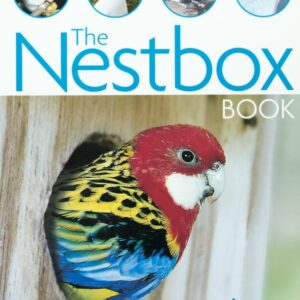The Nestbox Book 2nd Edition (PDF only)
$22.00This is a practical and informative 60 page book that guides you through the process of selecting, constructing, installing and maintaining a selection of nestles for a variety of native Australian birds and mammals. There are great to use after fire has decimated a region to give these species refuge until the plants and trees have time to regrow.
There are nestbox plans for 25 different species – 16 birds, 8 mammals and bats. It also guides you on how high to place them, species breeding details and much more.
It also helps you to establish a management plan for the boxes to ensure we do not inadvertently support unwanted species who are in direct competition with native birds and mammals for food, water and shelter – as we want to help not further damage our recovering wildlife.
This book was first published by Gould League in 1997. It was complied by Jim Grant, with contribution by Hugo Phillipps (Birds Australia – RAOU), Tim Gunn (Gecco Nestboxes), Russell Trainor, Rob Morrison and Ellen McCullock (Bird Observers Club of Australia) in attempt to help protect native wildlife who were fast losing their habitat. This latest version was reproduced and updated in 2008. This book is currently only available in PDF.
This book is OUT OF PRINT and now only available in digital PDF version. A PDF link will be sent immediately upon payment being received (just a second or two) so look out for it. You will have 14 days to download your copy. Enjoy!
If you are looking to use this book to helping support wildlife recovery after the fires that have killed over a billion wild animals, or a school using this as part of lesson plans – email us at gould.org.au giving us a bit of information about you and how you will use the nest box book, and we will provide this to you FREE of Charge.
Please provide us the following information:
Organisation Name (if applicable)
Contact name
Address
Phone No
Email Address
How many and what type of boxes you intend to build and install
Location for installation
If you can take some photos during construction and give us any pics of the installations, they would be greatly appreciated as this helps us with funding of various programs so we can get more support for these activities. It also helps inspire others to do the same!



